13 Best Skillets 2023 | The Strategist
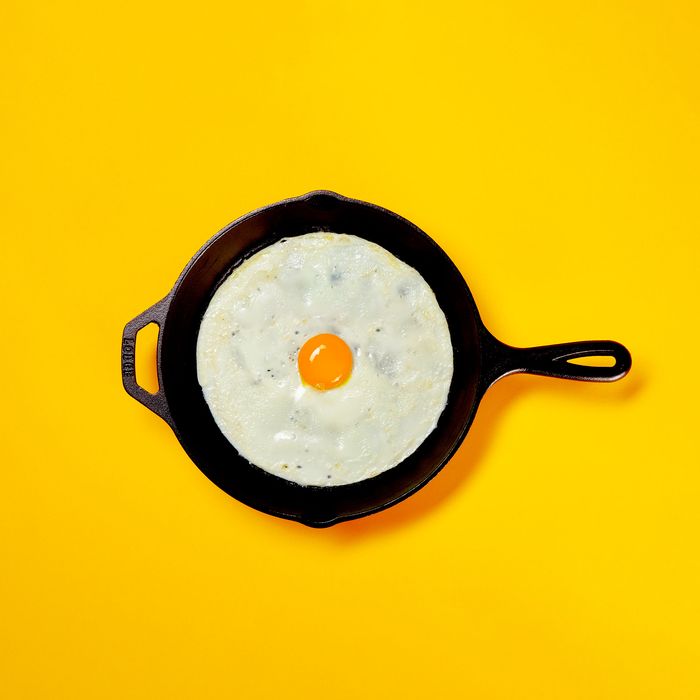
It should be said up top: Skillets is a broad category. There are, after all, several types — cast iron, carbon steel, stainless steel, copper, and nonstick. And then within each type, there are a lot of options. Do you go with a classic brand or take a chance on a newly beloved direct-to-consumer company? When it comes to such an essential tool, is it always worth it to splurge? How many skillets do you really need? There’s no one answer to each of these questions because the cookware you own should ultimately be a reflection of how you personally operate in the kitchen — something I’ve tried to help you think through here (with the recommendations of many pros, of course). If you’re simply looking to fill a hole in your collection and know what you want, you can jump to any section by clicking the quick links below. But if you’re starting from scratch or doing a full-on refresh, it’s worth a full read through to make sure you end up with a well-rounded, hard-working assortment.
One note: For consistency, I’ve mostly linked to skillets that are approximately ten inches (it’s a middle-ground size that works well for most dishes in households where you’re generally cooking for two to four people). But with nearly every one on this list, you can go bigger or smaller.
This is so obvious it feels a little silly to say, but the most important factor in determining what skillets you need is the material. Pretty much all of the experts I spoke with agree that a mix of cast iron, nonstick, and stainless steel or copper (which are fairly interchangeable) are all you need to make first-rate food, so those are the types you will find on this list. (The one exception is carbon steel, what you might call a cousin to cast iron).
Some of these pans are meant to last a lifetime, others aren’t. But regardless, upkeep is important. For this, I’ve noted when maintenance is just a simple run through the dishwasher or hand wash, versus when there’s more to do.
Here, I’ve listed whether the pan is heavy, medium, or lightweight — something to consider when you think about moving them around the stove, storing them, and cleaning them.
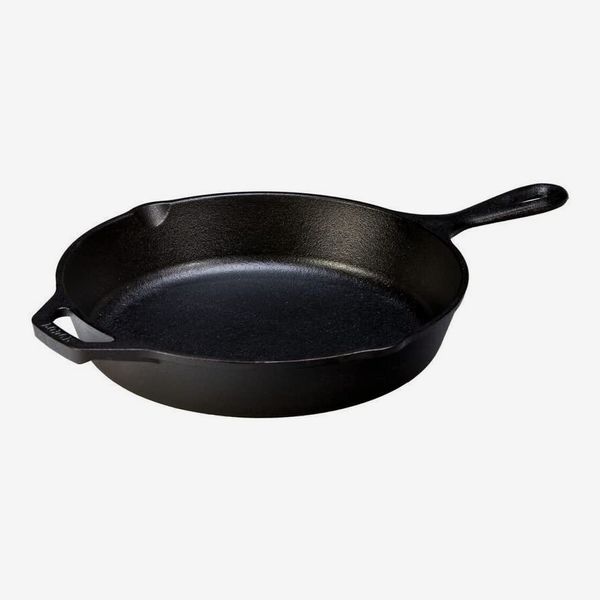
Material: Cast iron | Maintenance: Hand wash and keep well-seasoned | Weight: Heavy
Choosing a best overall skillet is easier than you might expect given the vastly different categories I laid out above. But really, if you only had to cook with this single one for the rest of your life, you’d be pretty okay. As a material, cast iron can pretty much do it all: get really hot and retain that heat, go from the stove to oven, and hold a nonstick surface if seasoned properly. (Lodge cookware comes pre-seasoned, which is a great bonus, but it might require some upkeep over the years.) You can sear, sauté, braise, fry, and bake with it. And while there are many companies that make cast-iron cookware (Butter Pat Industries and Smithey are two we’ve written about before), none is more beloved than the incredibly affordable, durable, and dependable Lodge.
It’s the most common cast iron you’ll see regular home cooks using: Strategist senior writer Liza Corsillo said it was the very best thing she bought in the entirety of the last decade, and I use mine so often it has taken up permanent residence on my front left burner. But professional chefs are just as devoted. “This pan will last you forever,” says Daniel Cutler, co-owner and chef of Ronan in Los Angeles. “It always comes in handy and never disappoints,” adds New Orleans–based chef and restaurateur Alon Shaya. For something so useful, the price is already seriously low, but Lani Halliday, founder and owner of Brutus Bakeshop, notes that you can often find them even cheaper at thrift shops, yard sales, and antique stores. “All you have to do is clean them up,” she says.
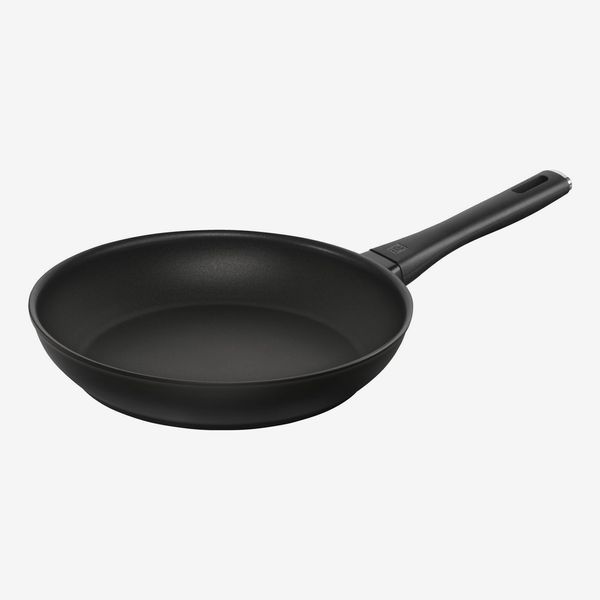
Material: Nonstick | Maintenance: Dishwasher safe | Weight: Lightweight
For a long time, it was a fact in my mind that you shouldn’t spend too much money on a nonstick skillet because — unlike cast iron and stainless steel — they are not meant to last forever. But after years of cooking in my own kitchen — many with this pan — as well as some very thorough research, I think it’s safe to say what you want is a moderately priced nonstick. It should be a workhorse — frying and scrambling eggs, crisping up fish skin and leftover rice, griddling pancakes, gently toasting spices — but one you don’t have to be overly precious about. Bottom line: I wouldn’t spend much more than $100 on something that will inevitably need to be replaced, but I also wouldn’t spend too little on a random pan that is bound to fall apart after only a year or two (if not sooner). The Zwilling Madura hits this sweet spot, and in many people’s opinions, it’s the way to go.
“I love that it’s technically safe for metal utensils, something that I’ve always considered a nonstick no-no,” says recipe developer and writer Rebecca Firkser. “I still try to be cautious when flipping things with my metal fish spatula, tongs, and slotted spoon, but even when I’ve scraped the pan accidentally, I’ve never seen a scratch on the surface. I also love that the handle stays cool to the touch, which is obviously not the case with every pan.”
Recipe developer and cookbook author Andy Baraghani swears by the Zwilling Madura, too, noting its lightweight design and flared lip that make it easy to toss ingredients. For her part, recipe developer and cookbook author Molly Baz says, “I like the way it feels in my hand ergonomically. I can hold it in one hand without it hurting my wrist or flopping over to the side.”
Though many nonstick skillets say they’re oven and dishwasher safe, the Zwilling Madura has withstood both those tests. I use mine to make frittatas (as do Firkser and Baragahni), and Baz says, “I have been putting it in the dishwasher since I bought it four or five years ago, and it shows no signs of degraded coating.”
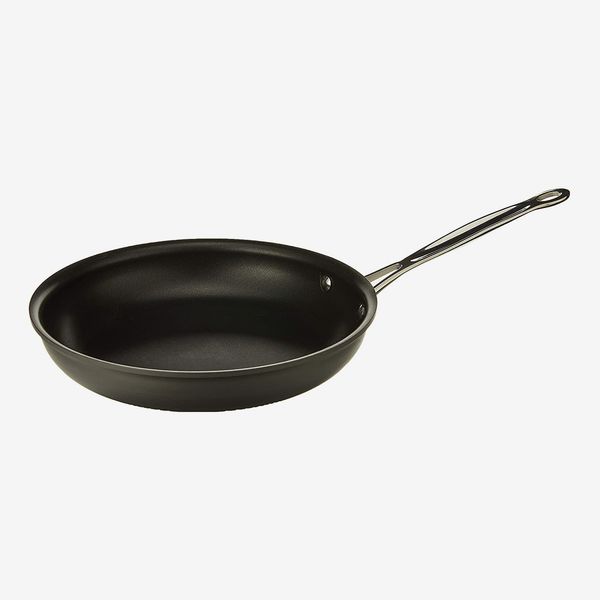
Material: Nonstick | Maintenance: Dishwasher safe | Weight: Lightweight
Along with my ten-inch Zwilling Madura, I own an eight-inch Cuisinart Chef’s Classic Nonstick. It’s been in my regular rotation for the past two years, used primarily for eggs (I make scrambled, fried, omelets, or a frittata most mornings). Though eggs take a fairly gentle preparation, and leftover bits hardly require any scrubbing to get off (if they exist at all), I can say this skillet has held up beautifully so far — a good endorsement considering it’s half the price of the Zwilling.
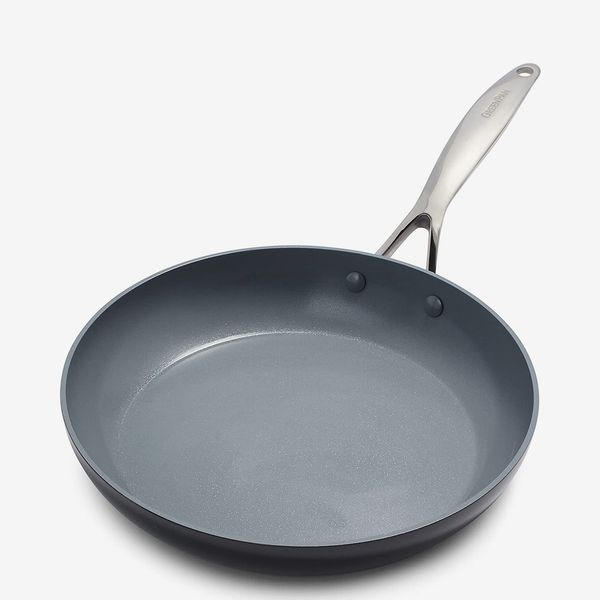
Material: Nonstick | Maintenance: Hand wash recommended | Weight: Lightweight
While Teflon coatings should be avoided because of the toxic chemicals that can scratch off from them, there are a bunch of other materials and processes that can make a skillet nonstick (both the Zwilling and the Cuisinart models are not coated with Teflon). But some folks are sticklers for ceramic-coated pans, supposedly the safest and healthiest of all. I’ll be honest: I’m not a huge fan of ceramic because I find that the surface isn’t quite as nonstick as others, especially over time. But many people swear by them, and GreenPan (which has different series of its ceramic nonstick pans with slightly varying properties) seems to be the favorite.
Recipe developer and food writer Caroline Lange has been using hers daily for almost two years (she even recipe-tested three cookbooks on them) — and they’re showing “very minimal wear,” she says. “They clean easily; if there’s ever any oil cooked on (like if I fry an egg really hot), scrubbing with a bit of baking soda takes it right off. And I also like that they’re really oven safe, up to 600 degrees. My oven doesn’t even go to 600 degrees!” To that point, cookbook author Vallery Lomas even told me she’s even baked a galette (which obviously goes in the oven) in her GreenPan.
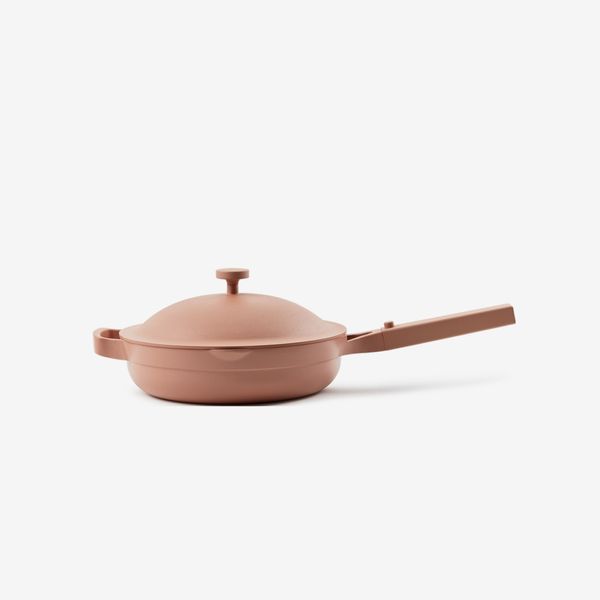
Material: Nonstick | Maintenance: Hand wash | Weight: Medium
As I acknowledged in my dedicated nonstick-skillet story, there are some differing opinions about the Always Pan. Some believe it doesn’t live up to the Instagram hype (especially given its price), but I’ve found it to be durable in the couple of years I’ve owned it and cleverly designed. While I’m not convinced of the company’s claim that it will replace eight different pieces of cookware, I do find it to be exceedingly useful because of the high sides, which offer protection from splatter when I’m searing fish, and from spillage when I’m making a big batch of something like fried rice. The tight-fitting lid is also handy; depending on how you place it, it has the option of fully closing or leaving a small hole for steam to escape. The pour spout is smart, too, making it a pan that can handle saucy dishes. Halliday endorses the Always Pan, saying that the “weight, heft, and finish are all excellent,” and Strategist editor Maxine Builder says she’s “obsessed” with hers too.
[Editor’s note: This review is based on the original version of the Always Pan. The brand recently released an updated version, linked here. I’m in the process of testing it and will update accordingly.]
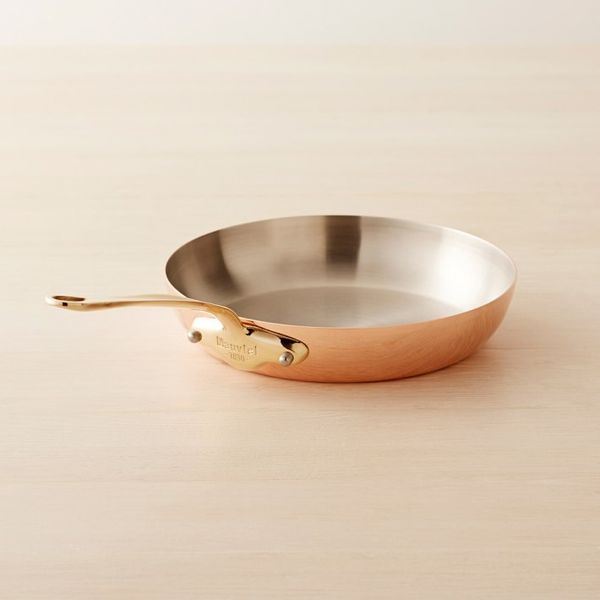
Material: Copper | Maintenance: Hand wash and dry as soon as possible after use | Weight: Medium
There’s a reason copper skillets are so expensive: You have precise control over them. “Copper conducts heat, retains heat, and then cools down in an incredibly exacting way,” Cutler explains. “Stainless steel is decent at that, too, but just not quite as good. And cast iron holds temperature for a really long time but is hard to turn back down.” Mauviel, which has been making copper cookware in France for more than 150 years, is the go-to brand — the one used in professional kitchens. “We got ours as a gift,” Cutler admits, “but if I had unlimited money, I would only use these.” The one downside is upkeep. If you want to keep them sparkling clean, you’ll need Bar Keepers Friend. And even if you don’t mind the natural patina (Cutler doesn’t shine his set), you need to “wash it with hot soapy water and an abrasive sponge” as soon as you’re done cooking so the food doesn’t stick.
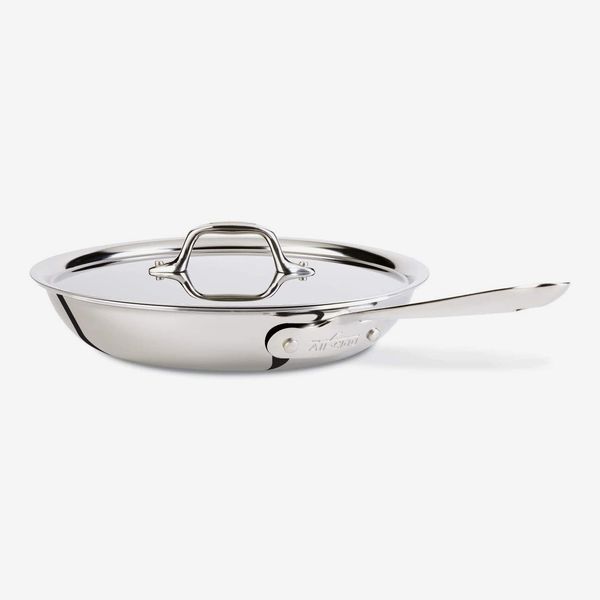
Material: Stainless steel | Maintenance: Hand wash | Weight: Medium
In home kitchens, you’re more likely to find stainless steel than copper skillets. And when it comes to stainless steel, All-Clad is the tried-and-true forever favorite. It’s a brand that has surrounded me my whole life — in the classic Food Network cooking shows I used to watch, in my mom’s cabinets from the time I was born, and in the test kitchen of Bon Appétit (where I used to work). Matt Rodbard, food writer, editor, and cookbook author, even says that the handle is so “iconic” that if you flip through “most cookbooks of the last 20 years, you’ll spot it.” Robert Guimond, the chef and owner of Public Display of Affection in Brooklyn, swears by his to steam ingredients or help them cook faster, and it comes with a matching lid for splatter control. “It’s durable and it’s beautiful,” he says. “I often find myself daydreaming about sautéing some gnocchi or scallops with it right after I’m done washing it.”
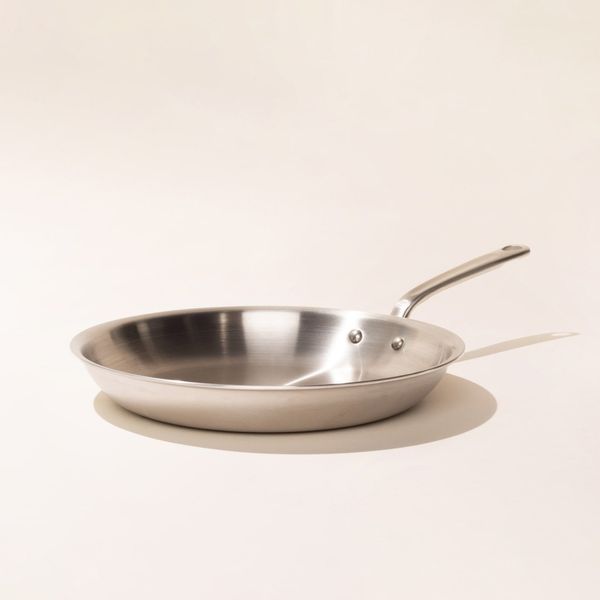
Material: Stainless steel | Maintenance: Hand wash | Weight: Medium
Culinary producer Kiano Moju swears by her Made In skillet — in fact, she swears by her whole Made In set, which made the pan an even better value. “I bought the set because of the price,” she says, referring to the bundled deal Made In gives when you buy certain pieces together. And despite her initial belief that stainless steel is for chefs and not home cooks like her, she found the pans to be “well built, with the handles really welded on instead of attached from the outside.” Builder agrees, describing the skillets as having “heavy bottoms with well-designed, easy-to-lift handles.”
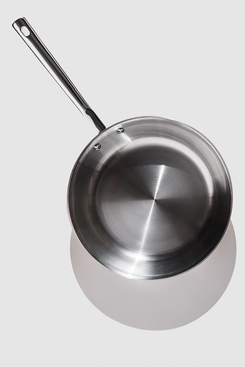
Material: Stainless steel with copper core | Maintenance: Hand wash | Weight: Medium
For the best of both worlds (a price about the same as All-Clad’s stainless steel, with a touch of copper magic), Material makes a stainless-steel skillet with a copper core that I have used for several years now. To be fair, I’ve never cooked on straight Mauviel copper before, so I can’t compare it directly — but what I can say is that this pan heats up and cools down evenly, and that I think the design is particularly sleek.
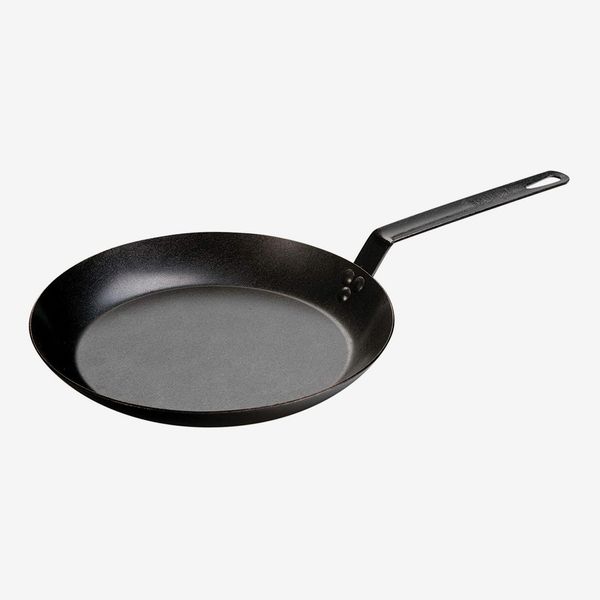
Material: Carbon steel | Maintenance: Hand wash and keep well-seasoned | Weight: Medium
Like I hinted at earlier, carbon steel behaves very similarly to cast iron. It’s not quite as versatile (the lower, more sloped sides mean it’s difficult to fry, braise, or bake in it). But it is somewhat lighter (notably, it’s the material most woks are made out of, practical for maneuvering around the stove and picking up and flipping ingredients). The surface tends to be a bit smoother than cast iron, making it more amenable to delicate ingredients like seafood. “I use mine for everything from paella to pressing Cubanos because they are quite heavy,” says chef Jordan Wallace, culinary director of Denver’s Pizzeria Locale. “And over a coal or wood fire camping, these are clutch.”
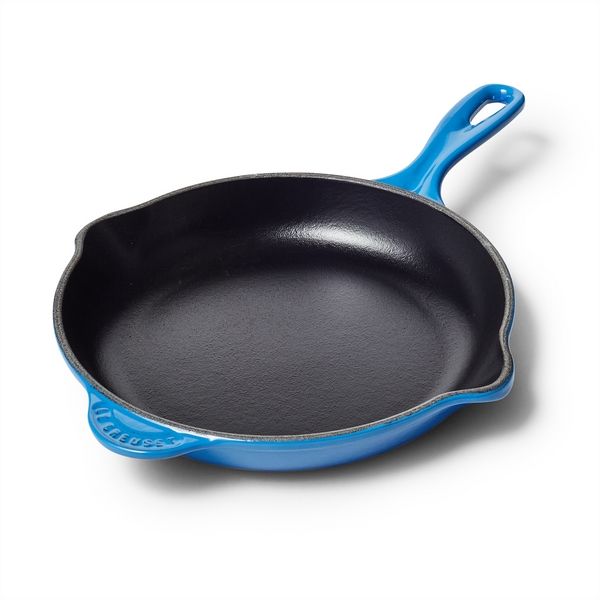

Material: Enameled cast iron | Maintenance: Dishwasher safe | Weight: Heavy
The primary difference between cast iron or carbon steel and enameled cast iron is a thin coating that makes the surface very smooth and fairly nonstick without having to season the pan. The downside: The layer is susceptible to scratching or chipping, and once that happens, it can’t be reseasoned to live on in perpetuity. But this shouldn’t happen if you take care of your pan, and I’ve found that after several months of using this one, it still looks brand new. Think about it: Just like a Dutch oven (the vast majority of which are made from the same material), it’s meant to be durable even if it can’t handle quite the same amount of wear and tear as a Lodge (and it shouldn’t go over the grill, either). The other difference is the look. Le Creuset’s enameled cast-iron skillets, which come in a variety of colors, look nice going straight from the stove or oven to the table (whereas Lodge’s cast-iron pans feel industrial and not like something you’d necessarily want to present food in). In mine, I make shakshuka and fried eggs for breakfast, toast sandwiches for lunch, sauté beans for dinner, and on and on. And when I’m done, a quick wash with water and dish soap cleans it right up.
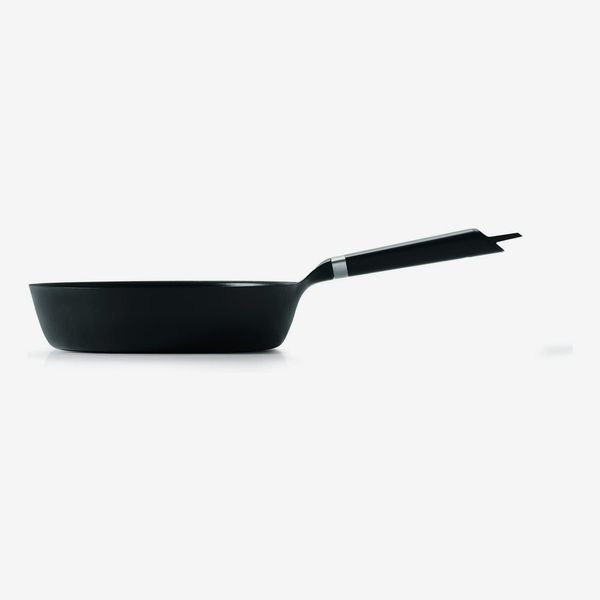
Material: Enameled cast iron | Maintenance: Dishwasher safe | Weight: Lightweight
Vermicular, a Japanese company that makes only a small handful of kitchen products, first became known for its precision cooker. Six months ago, it released this sleekly designed oven-safe skillet made from enameled cast iron, which I’ve been using for just about as long. Like the Le Creuset, above, it has a smooth and fairly nonstick surface with the durable nature of a hearty material. But there’s one notable difference: It’s truly lightweight. The pan is, in fact, even lighter than my Zwilling Madura by two ounces (though it has an ever-so-slightly smaller diameter). This means I can move it around from counter to stove and from stove to oven nimbly and easily with one hand. The handle is also longer and has a more comfortable, rounded shape than that of the Le Creuset. It’s pricey but has the feel of something made to last. One note: Though the brand says it is dishwasher safe, I’ve only washed mine by hand so far.
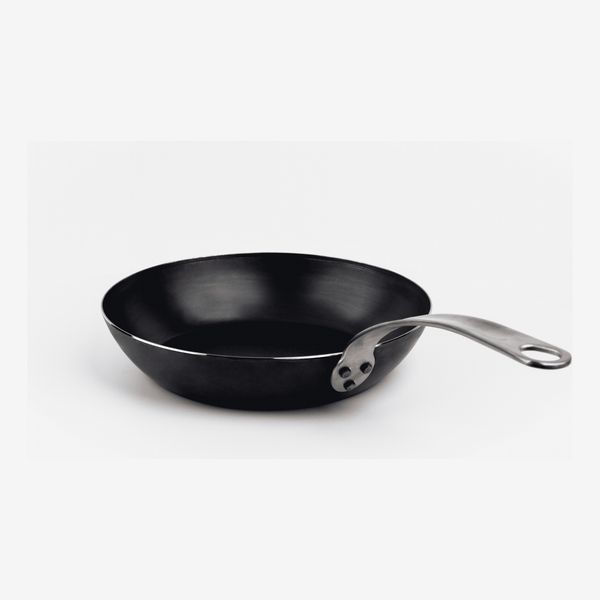
Material: Carbon-steel | Maintenance: Hand wash and keep well seasoned | Weight: Medium
Woks are a very particular type of skillet (if you can call them that at all). Because their primary purpose is for stir-frying, they’re built in a V shape with extremely high sides to accommodate tossing lots of ingredients and have two handles to make maneuvering around a high flame easy. Still, they can be used for many of the same tasks as standard skillets, like braising, sautéing, and steaming (and even for things standard skillets can’t be used for, like boiling stew or popping popcorn). In my roundup of the best ones, this Made In model was recommended by Lucas Sin, chef at Junzi Kitchen and Nice Day. It’s almost like a hybrid of the more traditional woks on that list and the carbon-steel pan above: It’s quite compact with slightly lower sides (though Sin says it “comfortably cooks for two”), has only one handle, and features a bottom on the wider side, which Sin prefers “for as much surface contact as possible.”
• Andy Baraghani, recipe developer and cookbook author
• Molly Baz, recipe developer and cookbook author
• Maxine Builder, Strategist editor
• Liza Corsillo, Strategist senior writer
• Daniel Cutler, co-owner and chef of Ronan
• Rebecca Firkser, recipe developer and writer
• Robert Guimond, chef and owner of Public Display of Affection
• Lani Halliday, founder and owner of Brutus Bakeshop
• Caroline Lange, recipe developer and food writer
• Vallery Lomas, cookbook author
• Kiano Moju, culinary producer
• Matt Rodbard, food writer, editor, and cookbook author
• Alon Shaya, restaurateur and chef
• Lucas Sin, chef at Junzi Kitchen and Nice Day
• Jordan Wallace, culinary director of Pizzeria Locale
The Strategist is designed to surface the most useful, expert recommendations for things to buy across the vast e-commerce landscape. Some of our latest conquests include the best dining room décor items, coffee-makers, knife sets, Japanese coffee brewer, charcoal water filter, and drinking glasses for water and more. We update links when possible, but note that deals can expire and all prices are subject to change.
Every editorial product is independently selected. If you buy something through our links, New York may earn an affiliate commission.